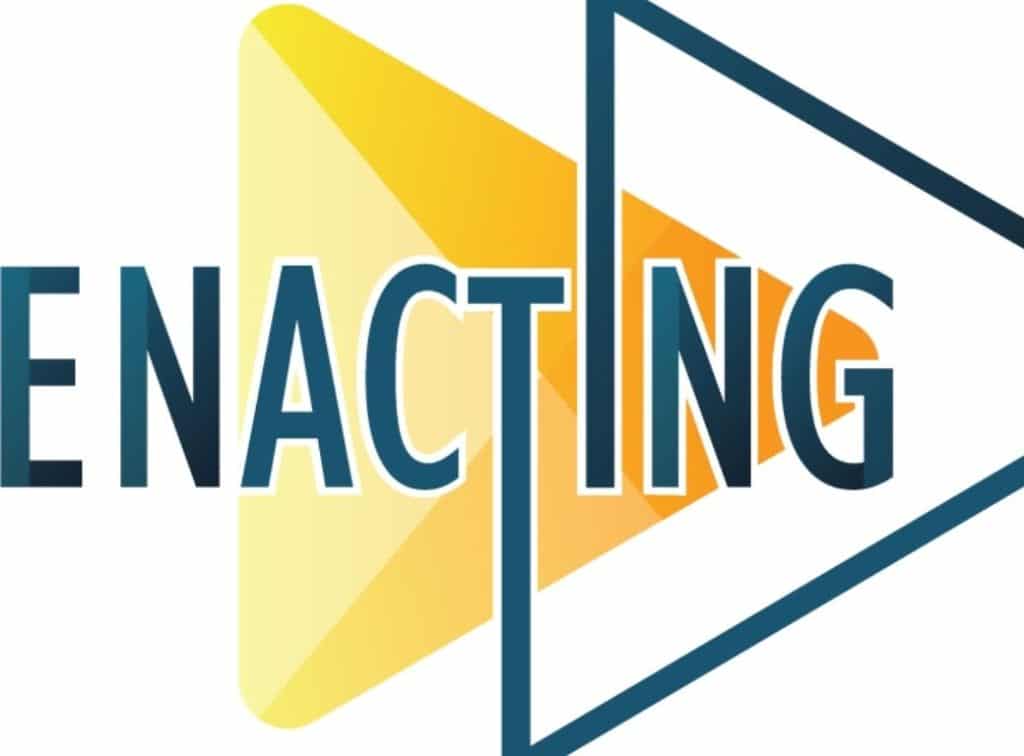Did you know that using varied language can significantly improve your writing style? Many writers often default to words like “implementing” without realizing there are numerous synonym for implemented at their disposal. This guide will introduce you to 14 another word for implementing such as enacting, establishing, and advancing, which can help you convey your ideas more effectively. By the end, you’ll have a richer lexicon to draw from, elevating your writing to new heights.
Executing
Executing is more than just carrying out tasks; it’s about translating ideas into tangible results. Individuals must focus on executing plans that align with their core values and aspirations, creating a roadmap that guides their actions and also resonates deeply with their personal beliefs.
This alignment fosters a sense of control and fulfillment, as it empowers individuals to see their efforts reflected in real-world outcomes. Effective execution requires a blend of strategy and adaptability. As individuals embark on their journeys, they must remain open to adjusting their plans in response to new information and experiences.
This flexibility is crucial for overcoming obstacles and seizing opportunities, ultimately enhancing the quality of their execution. By embracing this dynamic process, individuals can transform their visions into reality, cultivating both personal growth and a deeper connection to their goals.
Applying
Applying theories is a pivotal step in transforming abstract concepts into concrete outcomes. This process is crucial for anyone seeking to harness the power of knowledge and freedom. By applying theories, individuals can bridge the gap between thought and action, ensuring that innovative ideas manifest in tangible ways.
The act of application invites a deeper understanding, as it forces individuals to confront the complexities and nuances of their ideas within real-world contexts. The significance of applying knowledge extends beyond personal growth; it fosters collaboration and shared learning within communities.
When theories are put into practice, they generate feedback loops that enhance collective wisdom. This dynamic propels individual progress and also cultivates an environment where diverse perspectives can converge, leading to richer solutions.
Enacting
Enacting a plan requires a clear vision and the commitment to bring that vision to life through deliberate actions. This term encapsulates the essence of moving from theoretical concepts to tangible outcomes. It emphasizes the importance of taking steps that are both strategic and purposeful, ensuring that every action aligns with the overarching goals.

When we think about enacting, it’s about more than just following a checklist; it’s about engaging with the process and adapting as necessary to navigate challenges. Enacting a plan often involves collaboration and communication.
It’s essential to rally others around the vision, fostering an environment where ideas can flourish and evolve. By actively involving stakeholders in the enactment process, you not only enhance buy-in but also cultivate a sense of shared responsibility.
Realizing
Realizing a vision involves transforming abstract ideas into tangible outcomes through strategic actions and thoughtful planning. This process requires not just a clear understanding of the goals but also an unwavering commitment to navigate the twists and turns that often accompany ambitious endeavors.
As one embarks on this journey, it becomes essential to embrace adaptability—this flexibility allows for recalibrating strategies in response to unforeseen challenges and opportunities that may arise along the way.
Resilience plays a crucial role in the realization of any vision. It’s about maintaining focus and determination even when faced with setbacks. The ability to learn from failures and persist despite difficulties can ultimately distinguish successful ventures from those that falter.
Deploying
Deploying a strategy requires careful coordination and execution to guarantee that the intended objectives are met effectively. This term conveys a sense of action and purpose, suggesting that a plan is not merely created but actively put into motion.
In the world of business, deploying a strategy can involve mobilizing resources, aligning team efforts, and ensuring that every stakeholder understands their role in the process. It transforms abstract ideas into tangible actions, making it essential for organizations striving to achieve specific outcomes.
Organizations often focus on deploying strategies that align with their goals, reflecting a commitment to not just theoretical frameworks but practical application. The success of deployment lies in its adaptability; it requires continuous assessment and adjustment based on real-time feedback.
Carrying Out
Carrying out a plan necessitates a systematic approach to guarantee that every component functions as intended. This structured execution is not merely about ticking boxes; it’s about weaving together the intricate threads of strategy, resources, and timing.

Each task must be meticulously executed, ensuring that all elements align with the overarching objectives. By maintaining a clear focus on the desired outcomes, individuals can navigate potential pitfalls and adapt to challenges that arise along the way.
The act of carrying out a plan often requires collaboration and communication among team members. When diverse perspectives and skills converge, the implementation process becomes more robust, enhancing creativity and problem-solving capabilities.
Instituting
Instituting a new policy or practice within an organization is more than just a procedural step; it’s about creating a cultural shift. By instituting innovative solutions, leaders can lay the groundwork for fostering an environment that encourages feedback, which is essential for the initiative’s acceptance and sustainability.
When employees feel their voices matter, they are more likely to embrace changes wholeheartedly, transforming reluctance into enthusiasm. Instituting alternatives requires careful planning and communication. It’s vital to articulate the vision behind the changes clearly, helping team members understand not just the “what” but also the “why.”
This transparency builds trust and empowers individuals to contribute their insights, enriching the implementation process. By positioning themselves as facilitators of change rather than mere enforcers, leaders can inspire a collective commitment to new approaches, ultimately driving long-term success.
Integrating
Integrating systems requires a thorough understanding of the components involved and how they interact. This approach goes beyond merely placing elements side by side; it involves creating a cohesive framework where each part complements the others.
Careful planning and strategic execution become paramount in this context, as even the most sophisticated systems can falter without a solid foundation. When different elements are successfully integrated, they can amplify each other’s strengths, leading to innovative solutions that would be impossible in isolation.
Integration fosters collaboration and synergy among teams, encouraging them to share insights and resources. This collaborative spirit not only enhances efficiency but also cultivates an environment ripe for creativity.
Effectuating
Effectuating change within an organization or community goes beyond mere execution; it embodies the essence of transformation. This process involves clear communication, stakeholder engagement, and the establishment of measurable goals that serve as a roadmap for success.

When we speak of effectuating alternatives, we emphasize the importance of introducing new methods and also ensuring that all parties involved understand their roles and contributions. Effectuating solutions requires a mindset shift that encourages collaboration and innovation. Stakeholder engagement is crucial, as diverse perspectives can lead to more effective outcomes.
By fostering an environment where ideas are shared and valued, organizations can better navigate challenges and seize opportunities for growth. In this dynamic landscape, the ability to effectuate change effectively can distinguish a thriving entity from one that stagnates.
Operationalizing
Operationalizing strategies within an organization requires a thorough understanding of how theoretical plans translate into practical applications. This involves not merely the execution of ideas but also a careful analysis of existing structures and resources to ensure that every initiative is grounded in reality.
By operationalizing strategies, organizations can bridge the gap between lofty goals and tangible outcomes, creating a roadmap that guides teams toward success.
Effective operationalization necessitates collaboration across departments. When various stakeholders contribute their insights and expertise, the resulting strategies are often more robust and adaptable. This cross-functional approach fosters innovation, as different perspectives can lead to creative solutions that might not have emerged in isolation.
Establishing
Establishing a robust framework for success is vital for any organization aiming to achieve its objectives. This foundational step sets the tone for future initiatives and also aligns resources and efforts towards common goals.
When you focus on establishing clear, measurable objectives, you create a roadmap that guides decision-making and fosters accountability across all levels of the organization. Establishing effective communication channels is crucial in this process.
By promoting transparency and encouraging collaboration, organizations can ensure that everyone is on the same page regarding their roles in achieving these goals. This sense of shared purpose not only boosts morale but also enhances productivity, creating an environment where innovative ideas can flourish.
Putting Into Action
Putting into action is a powerful phrase that encapsulates the essence of turning ideas into reality. This process involves translating concepts into practical applications, ensuring that theoretical frameworks evolve into tangible outcomes.

By embracing this dynamic approach, writers can breathe life into their narratives, transforming abstract thoughts into actionable steps that resonate with readers.
When we discuss putting ideas into action, we delve into a realm where creativity meets execution. It’s about more than just outlining plans; it’s about actively engaging with those plans to bring them to fruition. This transformative journey enhances the clarity of the message and invites the audience to participate in the unfolding story, making it relatable and impactful.
Running
Employing diverse running techniques can optimize performance and foster a dynamic work environment. Just as a runner adapts their stride to tackle various terrains, organizations can benefit from adopting different strategies tailored to their unique challenges.
Establishing clear communication channels is akin to ensuring that all runners in a relay understand their handoff points; it enhances collaboration and minimizes misunderstandings. This clarity not only streamlines processes but also empowers team members to contribute their ideas freely.
Promoting teamwork is another vital technique that parallels the supportive nature of a running community. When individuals feel connected and motivated by a shared goal, their collective energy can lead to extraordinary results.
Advancing
Advancing an organization requires a strategic focus on growth and development across various dimensions. One of the most significant aspects of this advancement is the integration of cutting-edge technology. Embracing new tools and platforms streamlines operations and also enhances productivity, creating a more agile workforce capable of adapting to market changes.
Organizations that prioritize technological advancement often find themselves at the forefront of industry trends, positioning themselves as leaders rather than followers. Equally important is advancing education within the organization.
Continuous learning opportunities empower employees to expand their skill sets, fostering a culture of innovation and adaptability. By investing in employee development, organizations cultivate a knowledgeable workforce that can respond creatively to challenges and leverage emerging technologies effectively.
Conclusion
Exploring another word for implementing can significantly enhance the clarity and richness of your writing. By incorporating terms such as “executing,” “deploying,” or “administering,” you diversify your vocabulary and also better convey your intended message. These implementing synonyms allow for a more precise expression of ideas, making your content more engaging for readers.
As you continue to develop your writing skills, consider integrating these implement synonym into your work to elevate your communication. Take the time to experiment with these options in your next piece; your audience will appreciate the effort.







